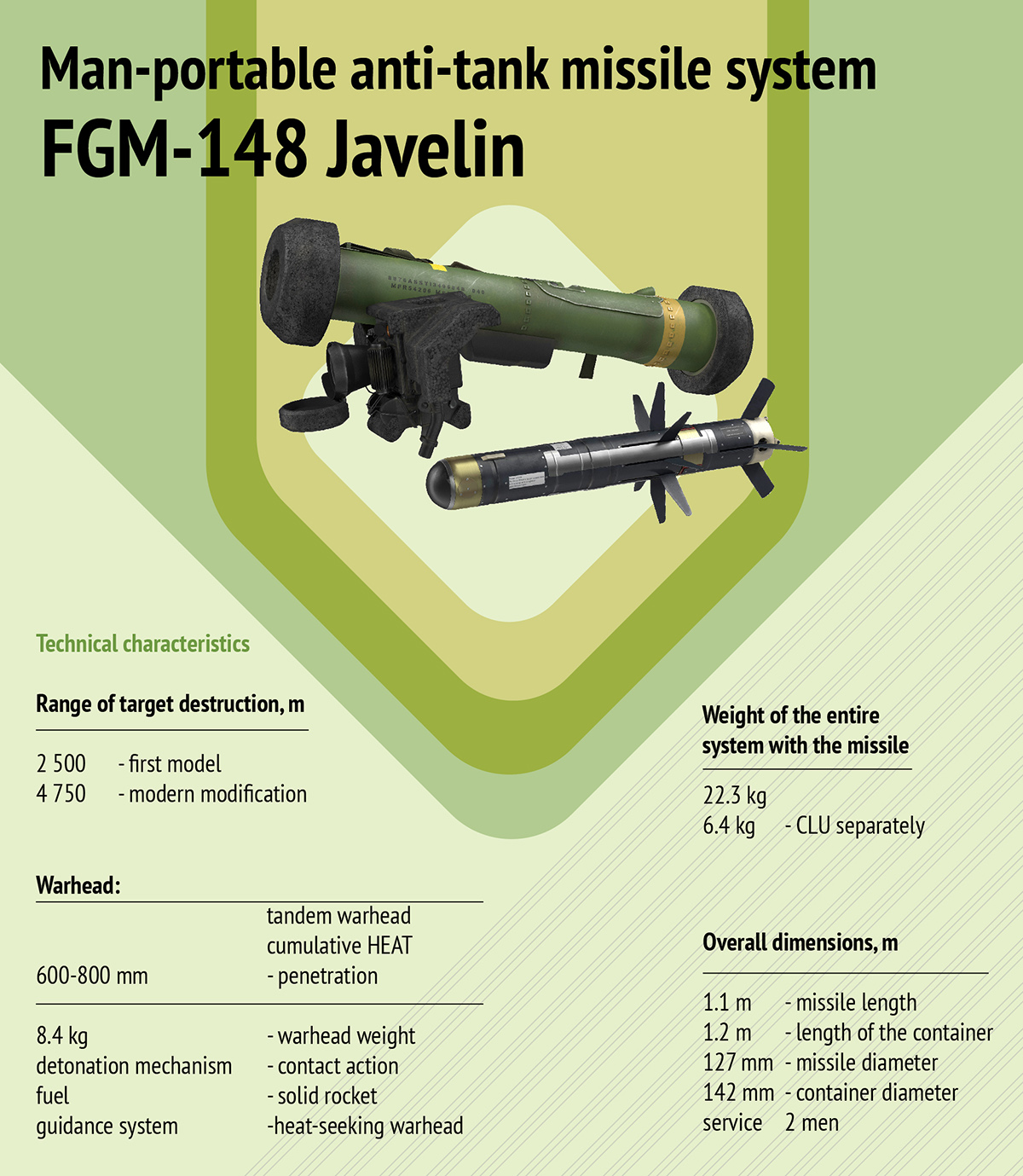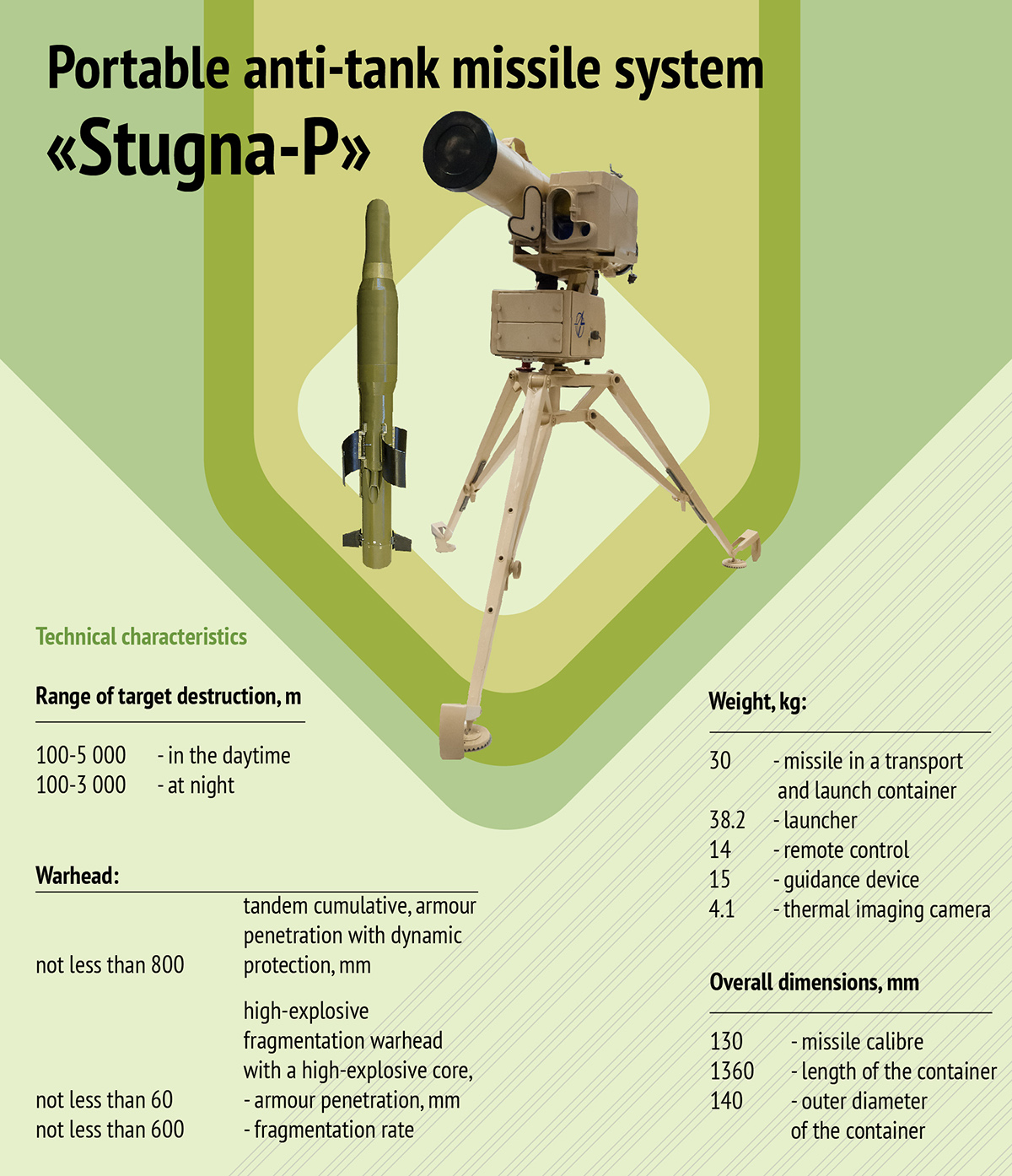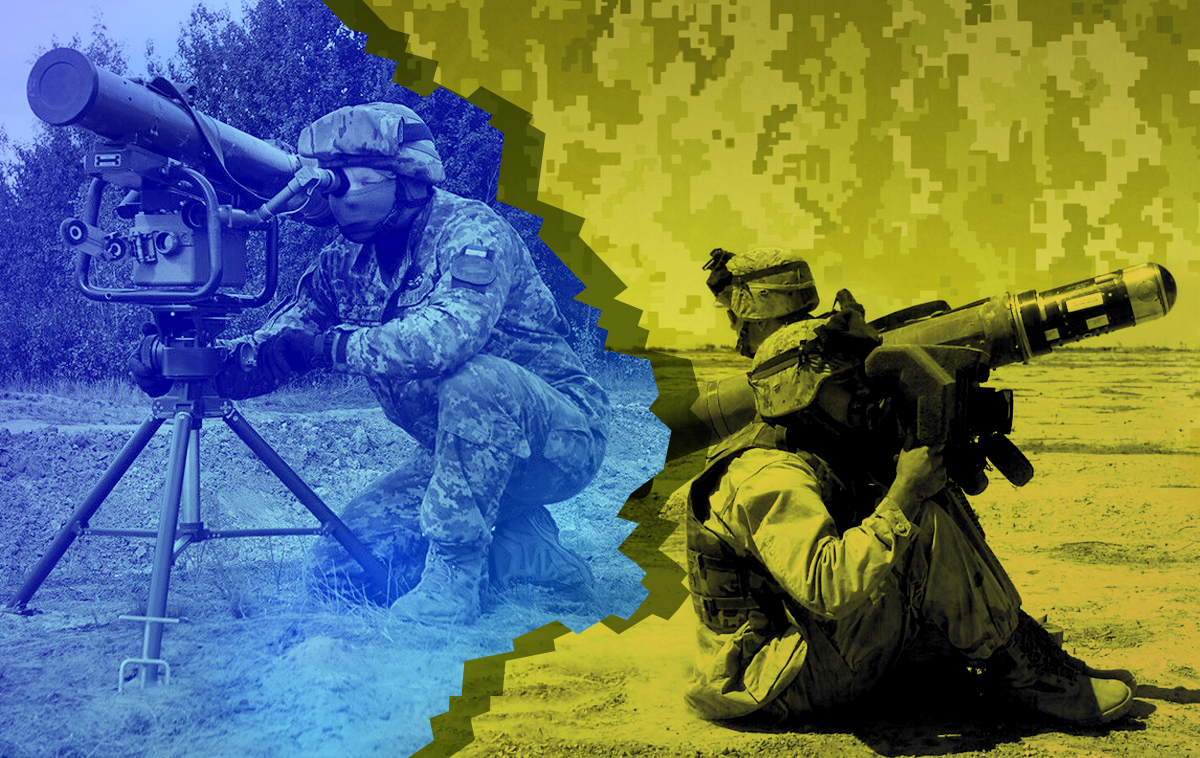Since the onset of the full-scale invasion by the Russian Federation, Ukraine has acquired a fairly substantial and diverse arsenal of armaments and technology from Western allies – ranging from portable anti-tank missile systems to modern, highly effective air defense systems. Soon, Ukraine’s airspace will be defended by the fourth-generation F-16 fighter jets. The rapid acquisition and effective utilization of Western weaponry by the Ukrainian Defense Forces align with the view that, de facto, Ukraine is already a member of the North Atlantic Alliance, despite the ongoing situation of legal ambiguity. In this series of articles, we will aim to highlight the most effective types of weaponry utilized by Ukrainians on the battlefield, commencing with the legendary anti-tank missile system, Javelin.
The Javelin anti-tank system, alongside the Turkish Bayraktar TB2 drone, can rightfully be deemed symbols of resistance for Ukraine, playing a significant role in the initial phase of the major conflict. The almost mystical belief in the power of these weapons was so profound among Ukrainians that children were even named in their honor. Yet, it’s a fact that, not least due to these anti-tank missile systems, the Ukrainian Armed Forces managed to halt and notably thin out numerous Russian columns in the approaches to Kyiv and in the East last spring.
However, this weaponry was in the possession of the Ukrainian Armed Forces long before the open attack. The first missile launches were tested on Ukrainian firing ranges as early as the spring of 2018, and since then, the Ukrainian government’s procurement of these systems has only escalated. In January 2022, anticipating the inevitability of an attack, the United States significantly increased the supply of these anti-tank missile systems (now as military aid) alongside other light infantry armaments. This distribution was explained by Washington’s caution, likely driven by a mistaken assessment of the «fall of Kyiv within 3 days» and the corresponding expectations of a situation devolving into a partisan war.
Regardless, according to sources, on the eve of the invasion, Ukraine possessed 150 launching units with a stockpile of 1200 missiles, which, at 100% effectiveness, would be sufficient to destroy nearly all the armored vehicles of First Russian tank army. However, this elite Russian division indeed faced severe losses just outside Kyiv in the first 19 days of the invasion, losing 131 tanks and over 400 personnel.
Everything You Need to Know About Javelin
FGM-148 Javelin is a third-generation American anti-tank complex built on the principle of «fire-and-forget» – post-launch, utilizing an infrared seeker head (IRSH), the missile autonomously corrects its flight path and strikes the target in the selected attack mode (from above or straight on). This is a key advantage and feature of this anti-tank guided missile system, significantly reducing risks for the operator without compromising effectiveness in targeting. The total weight of the complex with the missile is 22.3 kg, ensuring sufficient mobility for a two-person anti-tank crew.

The missile itself, as mentioned, features independent guidance and carries a tandem shaped charge: the first charge neutralizes dynamic defenses to clear the way for the main charge. This ensures penetration of defenses equivalent to 600-800 mm of homogeneous armor. This is adequate for disabling any tank currently in the occupiers’ arsenal (even the pride of the Russian tank industry, the T-90M Proryv), particularly in the top-down attack mode where the tank’s armor is weakest.
The effective firing range is 2.5 km. At this distance, in the absence of countermeasure interference with the seeker head, the probability of hitting the target is quite high – 94%. The missile can travel over 4 km, but its effectiveness significantly decreases in such cases.
Another advantage of the «darts» is the «soft launch» system, allowing firing from enclosed spaces, enabling the targeting of enemy vehicles in urban combat conditions.
Of course, Javelin is not a miraculous weapon, and under conditions of low thermal contrast of the target or when seeking to blind the IRSH (using thermal blankets on armored vehicles, deploying aerosol smoke grenades, etc.), its effectiveness diminishes. Nevertheless, according to the assessment of Ukrainian military officials, the system has proven itself well on the battlefield. There are notable cases where a Javelin airborne operator managed to destroy 8 enemy armored units in a single battle, including 5 tanks.
Ukrainian «Darts»: High Effectiveness of Anti-Tank Weapons
The high effectiveness of this weaponry is evidenced by the fact that the missiles and launcher units of this system are included in nearly every subsequent package of US military aid (including the latest one). The Ukrainian side’s demands are undoubtedly considered in the formation of these packages. Another telling figure is the provision of over 8,500 of these anti-tank guided missile systems to Ukrainian military within just the first year of the full-scale war. To grasp the scale: in 2024, the US plans to reach a production level of 3960 missiles and 492 launchers per year.

However, it’s not just the Javelin. Before and during the full-scale war, Ukraine received a range of diverse anti-tank systems from allies, including American TOW-4, Swedish RBS 56 BILL (which, in principle, resembles the Javelin but lags behind in targeting technology and mobility), AT-4 and Carl Gustaf, British NLAW, German Matador, and many others. This allowed anti-tank units to be equipped with modern and effective weaponry, far surpassing the capabilities of outdated Soviet systems. But Ukraine also had its own solutions to counter the Russian armed might. Specifically, the Stugna-P system, produced by the LUCH Design Bureau since 2011, brilliantly proved itself in both the early and later phases of the war.
Despite Stugna being a second-generation anti-tank guided missile system due to its relatively outdated laser beam guidance technology, its effectiveness is no less than its American counterparts. The striking range of the domestic system exceeds 5 km during the day and up to 3 km at night, and its operators are secured through the application of a remote control panel located 50 meters away from the launcher. The guided missile of the system can be equipped with tandem cumulative, fragmentation-explosive, or thermobaric warheads. Its armor penetration reaches a similar 800mm of homogeneous armor with dynamic defense as Javelin. Furthermore, the system can engage low-flying targets, proven by the downing of at least two Russian attack helicopters Ka-52 in Kharkiv region in spring 2022. Stugna played a significant role in deterring Russian columns at the onset of the invasion. For instance, on March 12, fighters from the 112th Troop Brigade burned five units of Russian equipment, including two tanks, using the Ukrainian ATGM during a battle near the village of Skybyn (Kyiv Oblast).
***
But the «darts» are not the only weapons shaping victory. In the next piece, we will discuss Ukraine’s ‘armored fist’ – tanks and other armored vehicles provided by Western partners.
Source: The Gaze







